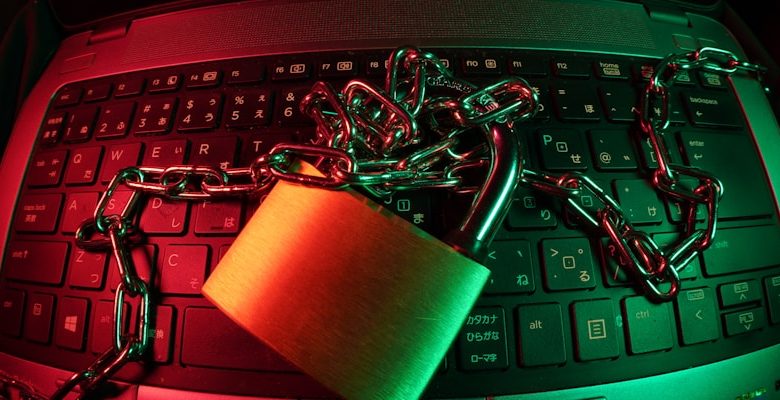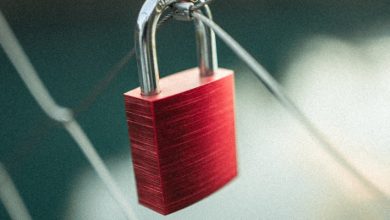How to Protect Your Crypto from Malware and Ransomware

- Understanding the Threat: What is Malware and Ransomware?
- Best Practices for Securing Your Crypto Assets
- Choosing the Right Anti-Malware and Anti-Ransomware Tools
- Implementing Multi-Layered Security Measures for Your Crypto
- Educating Yourself on Common Crypto Scams and Attacks
- Creating Secure Backups of Your Crypto Wallets
Understanding the Threat: What is Malware and Ransomware?
Malware and ransomware are two of the most significant threats to the security of your crypto assets. Malware is malicious software designed to infiltrate or damage a computer system without the owner’s consent. Ransomware, on the other hand, is a type of malware that encrypts the victim’s files and demands a ransom in exchange for decrypting them. This can be a significant risk for crypto holders, as losing access to their digital assets could result in financial loss.
Malware and ransomware can infect your system through various means, such as phishing emails, malicious websites, or infected USB drives. Once they gain access to your device, they can steal your sensitive information, including your crypto wallet keys, or lock you out of your files until you pay the ransom. To protect your crypto from these threats, it is essential to have robust cybersecurity measures in place.
Investing in reliable antivirus software can help detect and remove malware from your system before it causes any damage. Regularly updating your software and operating system can also help patch any security vulnerabilities that cybercriminals could exploit. Additionally, being cautious of the links you click on, avoiding suspicious websites, and not downloading attachments from unknown sources can help prevent malware infections.
When it comes to ransomware, creating backups of your important files and storing them securely offline can help mitigate the impact of an attack. In the event of a ransomware infection, you can restore your files from the backups without having to pay the ransom. It is also crucial to educate yourself about the latest cybersecurity threats and best practices to stay one step ahead of cybercriminals.
By understanding the threat posed by malware and ransomware and taking proactive steps to protect your crypto assets, you can minimize the risk of falling victim to these malicious attacks. Remember that prevention is always better than cure when it comes to cybersecurity, so stay vigilant and keep your defenses up to safeguard your digital wealth.
Best Practices for Securing Your Crypto Assets
When it comes to securing your crypto assets, there are several best practices you can implement to protect yourself from malware and ransomware attacks.
- Keep your software up to date: Regularly update your operating system, antivirus software, and crypto wallets to patch any security vulnerabilities.
- Use strong passwords: Create complex passwords with a mix of letters, numbers, and special characters to make it harder for hackers to crack them.
- Enable two-factor authentication: Add an extra layer of security by requiring a second form of verification, such as a text message or authentication app, to access your accounts.
- Avoid phishing scams: Be cautious of emails or messages asking for your personal information, and never click on suspicious links or download attachments from unknown sources.
- Backup your data: Regularly backup your crypto wallet and private keys to an external storage device or cloud service to prevent data loss in case of a ransomware attack.
By following these best practices, you can significantly reduce the risk of malware and ransomware compromising your crypto assets. Stay vigilant and proactive in safeguarding your investments to enjoy peace of mind in the volatile world of cryptocurrency.
Choosing the Right Anti-Malware and Anti-Ransomware Tools
When it comes to protecting your crypto assets from malware and ransomware, choosing the right anti-malware and anti-ransomware tools is crucial. These tools can help prevent malicious software from infecting your devices and stealing your sensitive information. It is essential to invest in reputable and effective anti-malware and anti-ransomware programs to safeguard your crypto investments.
One option is to use an anti-malware software that offers real-time protection against various types of malware, including viruses, Trojans, and worms. Look for a program that regularly updates its virus definitions to detect and remove the latest threats. Additionally, consider using anti-ransomware tools that can protect your files from being encrypted and held hostage by cybercriminals.
Another important factor to consider when choosing anti-malware and anti-ransomware tools is compatibility with your operating system and devices. Make sure the software you choose is compatible with your computer or mobile device to ensure optimal protection. Additionally, consider the user interface and ease of use of the tools to ensure a seamless experience.
In conclusion, investing in the right anti-malware and anti-ransomware tools is essential for protecting your crypto assets from cyber threats. Choose reputable programs that offer real-time protection, regular updates, and compatibility with your devices. By taking proactive measures to secure your digital assets, you can minimize the risk of falling victim to malware and ransomware attacks.
Implementing Multi-Layered Security Measures for Your Crypto
Implementing multi-layered security measures is crucial to safeguarding your cryptocurrency from malware and ransomware attacks. By utilizing a combination of different security protocols, you can create a robust defense system that significantly reduces the risk of unauthorized access to your digital assets.
One effective way to enhance your crypto security is by utilizing a hardware wallet in conjunction with software-based security measures. Hardware wallets provide an additional layer of protection by storing your private keys offline, making it virtually impossible for hackers to gain access remotely. This extra step adds an extra level of security to your digital assets.
In addition to hardware wallets, using strong, unique passwords for all your crypto accounts is essential. Avoid using easily guessable passwords or reusing the same password across multiple accounts. Consider using a password manager to generate and store complex passwords securely.
Regularly updating your antivirus software and firewall can also help prevent malware and ransomware attacks. Make sure to enable automatic updates to ensure that your security measures are always up to date with the latest threats and vulnerabilities.
Furthermore, consider implementing two-factor authentication (2FA) for an added layer of security. 2FA requires users to provide a second form of verification, such as a code sent to their phone, in addition to their password. This extra step can prevent unauthorized access even if your password is compromised.
Educating Yourself on Common Crypto Scams and Attacks
It is essential to educate yourself on common crypto scams and attacks to protect your digital assets from malware and ransomware. By understanding the various tactics used by scammers and hackers, you can better safeguard your investments and avoid falling victim to malicious activities.
One common scam to be aware of is phishing, where attackers send fraudulent emails or messages pretending to be from legitimate sources in an attempt to trick you into revealing your private keys or login credentials. Always verify the authenticity of any communication before sharing sensitive information.
Another threat is fake wallets or exchanges that lure users in with promises of high returns or low fees, only to steal their funds once they are deposited. Stick to reputable platforms and double-check URLs to ensure you are using legitimate services.
Ransomware attacks are also a significant risk in the crypto world, where hackers encrypt your files and demand payment in cryptocurrency to unlock them. Regularly back up your data to external sources and avoid downloading attachments or clicking on suspicious links to minimize the risk of falling victim to ransomware.
Creating Secure Backups of Your Crypto Wallets
Creating secure backups of your crypto wallets is essential in protecting your digital assets from malware and ransomware attacks. By following these simple steps, you can ensure that your investments are safe and secure:
- 1. Utilize a hardware wallet: Hardware wallets, such as Ledger or Trezor, offer an extra layer of security by storing your private keys offline. This makes it harder for hackers to gain access to your crypto assets.
- 2. Use encrypted storage devices: When creating backups of your wallets, make sure to store them on encrypted storage devices, such as USB drives or external hard drives. This will add an extra level of protection to your sensitive information.
- 3. Implement a strong password: When setting up your backups, be sure to use a strong, unique password that is not easily guessable. Avoid using common phrases or easily obtainable personal information.
- 4. Regularly update your backups: It is important to regularly update your backups to ensure that you have the most current information stored securely. Set a schedule to create new backups at least once a month.
- 5. Store backups in multiple locations: To further protect your crypto wallets, consider storing backups in multiple locations, such as a safe deposit box, a trusted friend or family member’s house, or a secure cloud storage service.



